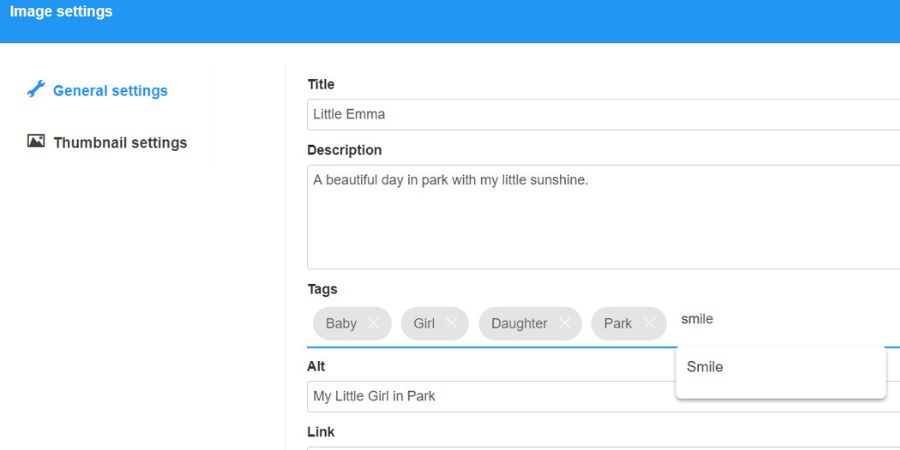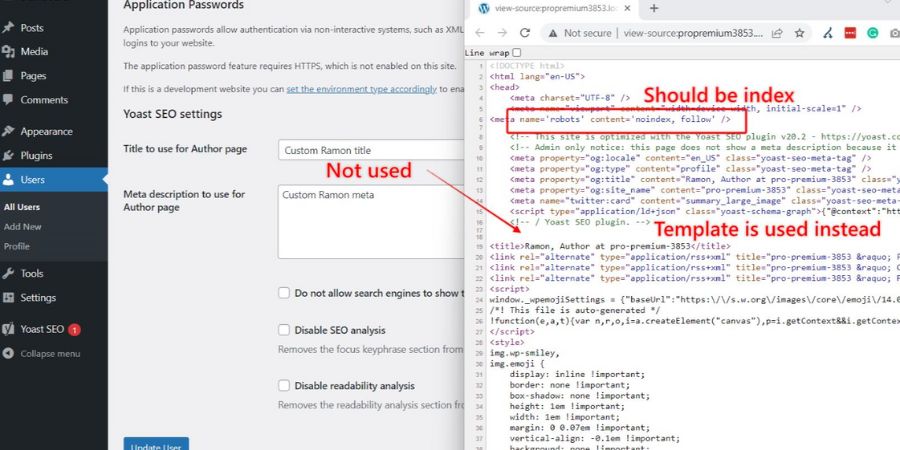In the world of digital tools and platforms, staying organized is crucial. Whether you’re managing a blog, or e-commerce store, or simply navigating a complex web interface, tag filter settings are a powerful feature that can help you streamline your process. This article will guide you through everything you need to know about tag filter settings—what they are, why they matter, and how you can use them to optimize your user experience. With this knowledge, you’ll be able to filter, organize, and find what you need with ease.
What Are Tag Filter Settings?
Tag filter settings allow you to sort or group content based on specific tags that you or a platform associate with it. Tags are often used to categorize information, making it easier to find related content. For example, in an e-commerce store, tags might be used to categorize products by size, color, or brand. In a blog, tags help group posts by topics, such as “technology,” “health,” or “travel.”
Filter settings, on the other hand, are rules or criteria you set to display only the content that meets certain conditions. When combined, tag filters allow you to refine what content appears, saving you time and improving your experience by narrowing it down to only the most relevant results.
Why Are Tag Filter Settings Important?
The importance of tag filter settings can be seen in various contexts, from e-commerce to blogging platforms. Here’s why they matter:
- Increased Efficiency: Without filters, users would need to sift through a lot of irrelevant content to find what they need. With tag filters, users can get to the right information more quickly.
- Improved User Experience: When users can filter content based on tags, they feel more in control of their search, enhancing their overall experience with your platform.
- Better Organization: Tags serve as a form of content categorization. When filters are applied, you create a more structured, organized interface that makes navigation easy for users.
- Data-Driven Decisions: In platforms that track user behavior, tag filters can reveal trends, helping businesses and creators make data-driven decisions about what content to focus on or create next.
How Do Tag Filter Settings Work?
Understanding how tag filter settings function is the key to mastering them. Here’s a general breakdown of how they work:
- Tag Creation: Tags are created by the system or platform owner. These tags are usually keywords related to the content or items being tagged. In a blog, these might be subject areas like “recipes” or “fitness.”
- Tag Assignment: Content (posts, products, etc.) is assigned tags. A blog post about healthy recipes might be tagged with “healthy,” “recipe,” and “cooking.”
- Filter Criteria: The user or system can set specific filters to show only content that matches certain tags. A shopper might use a filter to only see red items in an online clothing store.
- Displaying Results: When a filter is applied, only the content that matches the tags is displayed. This significantly reduces clutter and narrows down the options to what’s most relevant.
Different Types of Tag Filter Settings
Tag filters come in various forms, depending on the platform you’re using. Here are the most common types:
1. Basic Tag Filters
Basic tag filters allow users to select a single tag or multiple tags to refine their search. For example, in an online store, you might filter products by the tag “Men’s Shoes” to see only shoes in that category.
2. Advanced Tag Filters
Advanced filters offer more customization, allowing users to apply multiple filters simultaneously. For example, a user could filter products by “Men’s Shoes” and further narrow them down by color or size.
3. Hierarchical Tag Filters
Some platforms offer hierarchical tags, where tags are organized in a tree-like structure. For example, a “clothing” tag might have sub-tags for “shirts,” “pants,” and “shoes.” This allows users to filter content more specifically.
4. Boolean Tag Filters
Boolean tag filters use operators like AND, OR, and NOT to create complex queries. For example, you might want to filter blog posts to show only those tagged with “travel” AND “budget.”
Best Practices for Setting Up Tag Filters
- Use Consistent and Clear Tags: Ensure that each tag is used consistently across all content to avoid confusion and improve searchability.
- Create Hierarchical Tag Structures: Organize tags into categories and subcategories to make it easier for users to filter through content.
- Allow Multiple Filters: Enable users to apply multiple filters at once to narrow down results based on several criteria.
- Keep Tags Relevant to Content: Use tags that accurately describe the content to ensure users are shown the most relevant results.
- Limit the Number of Tags: Don’t overwhelm users with too many options; focus on the most important and relevant tags for the content.
- Provide Clear Instructions: Guide users on how to use the tag filters effectively with clear labeling and tooltips.
- Update Tags Regularly: Make sure to update and add new tags as content evolves to keep the filtering process accurate and relevant.
- Test Filter Functionality: Regularly test your tag filter settings to ensure they work properly and provide a smooth user experience.
Must Read: 3 Node WordPress Cluster
Common Mistakes to Avoid When Using Tag Filter Settings
While tag filters are incredibly helpful, there are common mistakes to avoid when setting them up:
- Over-Tagging: Adding too many tags to a piece of content can make it harder for users to find what they need. Stick to the most relevant tags.
- Inconsistent Tagging: As mentioned, consistency is key. Avoid using different versions of the same tag, such as “blue” and “navy,” unless necessary.
- Lack of Clear Instructions: Make sure users understand how to use the tag filters. Clear labeling and instructions can help guide them.
- Overcomplicating Filters: Don’t add too many layers of filters, as it can overwhelm users. Keep it simple and intuitive.
How to Optimize Tag Filter Settings for SEO

Tag filters don’t just improve the user experience; they can also boost your SEO efforts. Here are some tips on how to optimize your tag filter settings for search engines:
- Use Descriptive Tags: Tags should be descriptive and reflect the search terms your audience might use. By doing this, search engines can better understand the content.
- Optimize Tag Pages: In some cases, the pages that display filtered content (like tag pages in blogs) can be optimized with unique titles and descriptions. This helps with search rankings.
- Focus on Popular Tags: Make sure the most frequently used tags are easily accessible and that they reflect the most important topics or categories on your site.
- Don’t Overuse Tags: While it’s important to have tags, over-tagging can lead to keyword stuffing. Keep it relevant and sparse.
How Tag Filter Settings Benefit E-Commerce Websites
For e-commerce websites, tag filter settings are an essential part of the shopping experience. Here’s how they can benefit such sites:
- Enhanced Shopping Experience: By allowing customers to filter products based on multiple tags (e.g., price, size, color), you make the shopping experience more personalized and efficient.
- Higher Conversion Rates: When customers can find what they want faster, they’re more likely to make a purchase.
- Improved Inventory Management: Tag filters can also help businesses track which items are being filtered or viewed the most, helping them manage inventory better.
- Better User Retention: If a customer can easily find what they’re looking for, they’re more likely to return in the future.
Conclusion
Tag filter settings are a crucial tool for organizing, categorizing, and searching through content on any digital platform. They help users navigate through vast amounts of information with ease, making content more accessible and improving the overall experience. By applying best practices when setting up tag filters, optimizing for SEO, and avoiding common mistakes, you can maximize the benefits of this feature.
For businesses, e-commerce stores, and even bloggers, understanding and implementing tag filter settings can enhance the user experience and drive success. So, whether you’re organizing products, articles, or other types of content, tag filter settings are your secret weapon to a more efficient and user-friendly platform.
FAQs
Q: What is a tag filter setting?
A: A tag filter setting is a feature that allows users to sort content based on specific tags assigned to it. It helps refine searches and organizes content for easier navigation.
Q: How do I set up tag filter settings?
A: Tag filter settings are set by assigning tags to your content and then enabling filtering options based on those tags. Platforms like WordPress or e-commerce sites usually have built-in filter options.
Q: Are tag filter settings good for SEO?
A: Yes, tag filter settings can be beneficial for SEO when used correctly. They help organize content, making it easier for search engines to index and understand your site.
Q: Can tag filter settings be customized?
A: Yes, tag filter settings can be customized depending on the platform you’re using. You can set up multiple filters, hierarchical tags, and even Boolean filters.
Q: What are some common mistakes with tag filters?
A: Some common mistakes include over-tagging content, inconsistent tagging, and overcomplicating the filter options, which can confuse users.
Up Next, Don’t Miss: How Many Tables in a Default WordPress Database?




